We may earn revenue from the products available on this page and participate in affiliate programs. Learn more ›
You couldn’t have rolled a pickup truck full of beer cans off the mountain and created more commotion than the bull elk was making. I’d heard him bugle, checked the wind, snuck closer, and ultimately found myself a nice aspen tree to sit against. I could see 50 yards ahead of me before the mountainside broke into the drainage below—but I could see through the timber and onto the other face across the drainage, too, where the bull was. I had an open-reed call and some idea of what it was supposed to sound like. So I made a little mew.
He bugled back immediately. I waited a minute and mewed again. He answered that one, too. The third call escalated things to bedlam. I watched that bull appear on the opposite face and charge down into the drainage and out of sight, but not for long, and not unaccounted for. He broke limbs and kicked rocks coming up my side, but I remember the sound of his huffing the most. The 5×5 frame swayed into view.
“Sweet Jesus,” I said to myself. “He’s legal.”
And he kept coming. I already had the hammer back on my gun, and I fully planned to shoot him in the base of the neck when suddenly, at 30 yards, he slowed to a walk and turned broadside. I made a whitetail hunter’s bleat to stop him, and forced myself to carefully align the sights low on his chest as I squeezed the trigger. By the time the smoke cleared, my first elk was on the ground, hit through both lungs with a copper bullet that had zipped right through him.
I sent my buddy Miles Fedinec a message on my inReach.
Bull down.
The reply was quicker than I expected—and profane.
@#$% yeah!! Can we get horses to him?
I don’t know.
I’d bowhunted this unit in southwest Colorado a few years ago with Miles and Travis Reed, who owns Western Sky Outfitters. I’ve done several other elk hunts in New Mexico, Idaho, and Kentucky—snake-bitten on them all—but Reed’s camp is my favorite. It’s also the toughest. It’s a classic backcountry, public-land hunt that begins with a 10-mile horseback ride just to reach the area. The hunting days are long and physically exhausting. But the elk are in there and I decided some time ago that if the stars were to align perfectly, it’s where I’d choose to kill my first one. Archery tags are over the counter, and I had some close calls in there with my bow. Three years ago, I started applying for a muzzleloader tag for that unit, and this year I drew one.
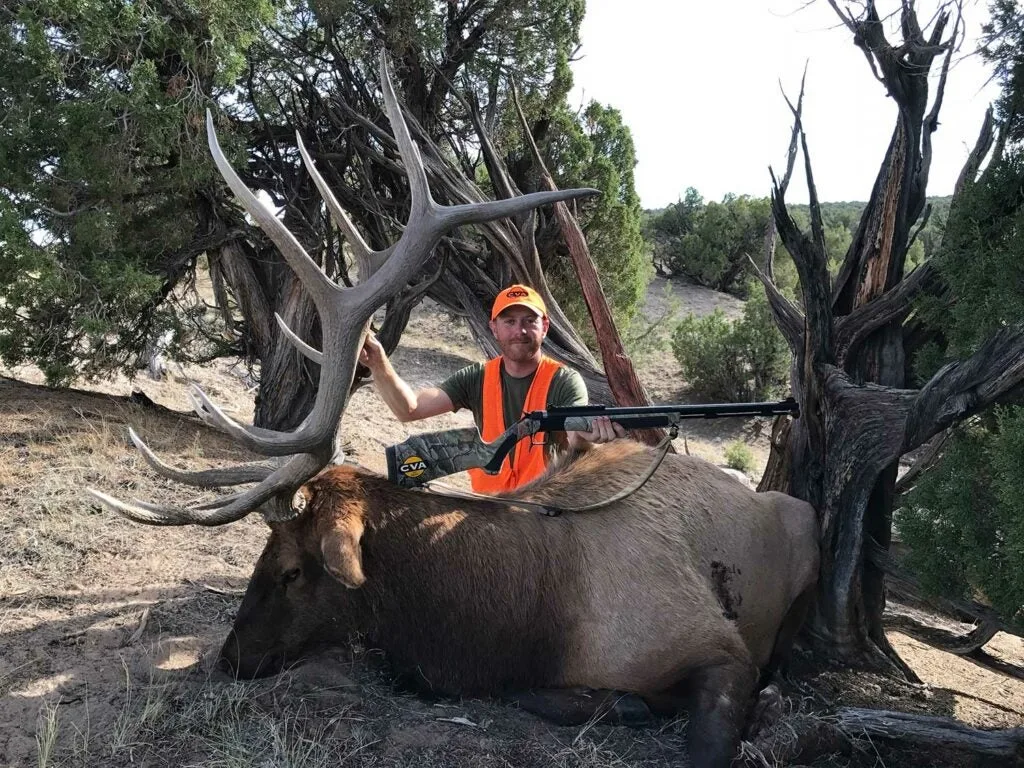
Reed loves the muzzleloader season, which falls smack in the middle of the rut. It’s become one of his most productive hunts of the year. But it wasn’t always that way. In fact, up until a few years ago, the season was plagued with disappointment. Elk are so tough that some state agencies estimate the wounded loss rate with archery gear to be up to a quarter of bulls shot. Reed and Fedinec both said that for years, their muzzleloader hunters fared worse.
“There was a time I didn’t want to guide a muzzleloader hunter,” Fedinec added. “It got so frustrating. There were years when we got near 100-percent shot opportunity, and hardly recovered any of them. Some of those bulls were wounded—but mostly, guys were flat missing them.”
The reason for that poor record can be partly linked to Colorado’s muzzleloader regulations, which are actually pretty standard for a western state. Unlike during the average muzzleloader whitetail season in the East, you can’t legally head into the mountains with your favorite scoped inline, loaded with 150 grains of pelletized powder and a saboted bullet—at least, not during muzzleloader season (though it’s fine during rifle season).
Colorado requires hunters to use open sights, loose powder, and either conical bullets of the caliber size or round balls (no sabots). There are similar restrictions in California, Idaho, Nevada, Washington, Oregon, and in certain areas of New Mexico and Montana. Several of these states restrict equipment even further. Some don’t allow jacketed bullets, and a few even outlaw inline guns with sealed breaches and 209 primer ignition. The idea, since many western states offer muzzleloader hunting during the choicest parts of season, is to maintain the quality of the hunt by keeping the primitive challenge in place.
Now, you can make that argument that people have been hunting with open-sighted muzzleloaders and round lead balls for hundreds of years. Plenty of critters have been felled by them before. That’s true. In fact, the first big-game animal I killed was a whitetail doe that I shot with a caplock muzzleloader and a patched round ball. I was 12 years old. I shot a bunch of deer with that setup, and what I remember is that it worked fine on whitetails out to about 70 yards. It didn’t always shoot through them. Would it work on an elk, too? Sure—if the hunter is up to it.
But remarkably few of us practice with iron sights these days—certainly not as much as we practice with our bows or with scoped rifles. Considering the time it takes to reload a muzzleloader, it’s safe to say the range sessions are even further reduced. Combine that reality with equipment that is indeed primitive, and put in the hands of an inexperienced eastern hunter in demanding country. Then ask him to use it proficiently during a fleeting, nerve-smashing opportunity at a 600-pound rutting animal. The ingredients are all in place for things to go haywire.
But a few simple tweaks to the setup have made it far more effective and forgiving. These days, Reed says most of his hunters are making good on their chances. They’re losing very few wounded bulls. And their effective shooting range has increased, all while staying within the legal requirements. If you’re headed west on a muzzleloader hunt—especially for elk but also anything else—carefully check the regulations for the state you’ll be hunting. And then start thinking about your setup, one piece at a time.
What Is the Best Muzzleloader Bullet for Big-Game Animals?
Much of Reed’s system now hinges, simply, on better bullets. When I was first learning to muzzleloader hunt, the options were a lead round ball, a lead conical, or one of a handful of jacketed pistol bullets inside a sabot. The demand in the muzzleloader market has been from whitetail hunters, so saboted options have gotten better. It took the full-caliber bullets a little longer to catch up—but there are some good ones out there now.
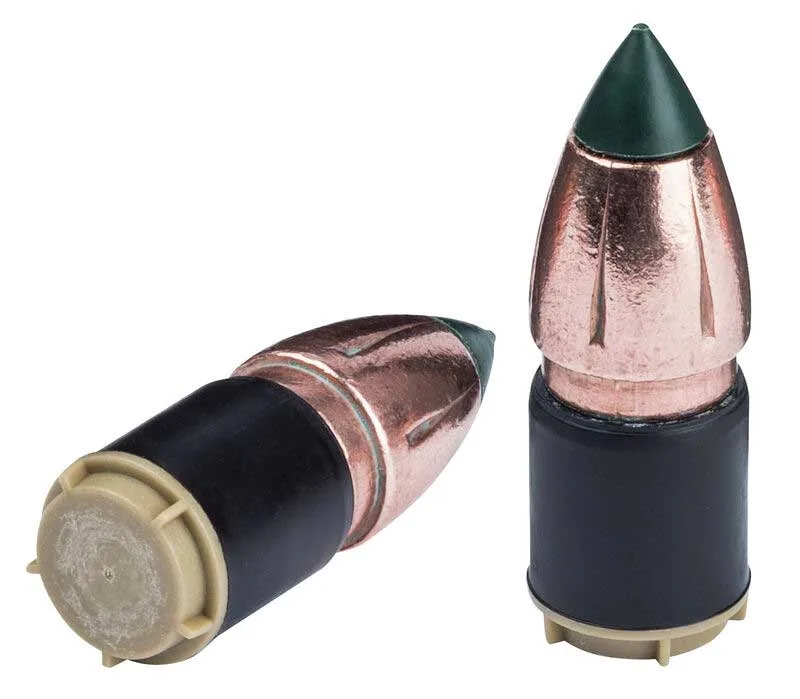
Federal’s B.O.R. Lock MZ system has a polymer cup on the base of a full-caliber bullet, and is available with either a 350-grain lead or 270-grain copper .50-caliber bullet up front. Go with the copper version if you can. It meets Colorado’s requirements (and, in fact, is so popular that it’s mentioned specifically in the Colorado hunting regs). It’s a tough bullet that also expands, and I’ve never seen a modern muzzleloader that wouldn’t shoot it well. I use it at home on whitetails, too. “The copper bullet just makes all the difference on a big animal like an elk,” Reed says. He keeps a couple guns sighted in for the bullets to loan to clients as needed.
There are obviously other bullets that meet the requirements and are no doubt good. There’s a lot of buzz right now among elk hunters about custom offerings like the Thor, which are based on the Barnes X, and the No Excuses muzzleloader bullets, which are heavy, cast-lead conicals. With both brands, shooters can order sample packs to find the exact bullet diameter and weight that their gun likes best. Sounds cool to me, but I haven’t tried them to personally vouch for them. If you’ve got the time and budget, experimenting with other options is never a bad idea. I can only say the Federal bullets do work well, and so are a good starting point.
Find the Right Powder for Your Muzzleloader
Pelletized powder dominates the muzzleloader market because, like sabots, it’s legal in most whitetail states, and it’s easy to load. But there are a bunch of loose powder options too, and regardless of what you’re hunting, it’s worth trying several of them if you’re interested in muzzleloader performance. My range testing has shown that loose powder consistently provides more velocity over its pelletized equivalent—and often better accuracy, too. There are a lot of options, including the classics, like FFG black powder and Pyrodex RS; newer substitutes like Hodgdon Triple 7; and Blackhorn 209, which is what Reed and Fedinec prefer in their guns and recommend to clients.
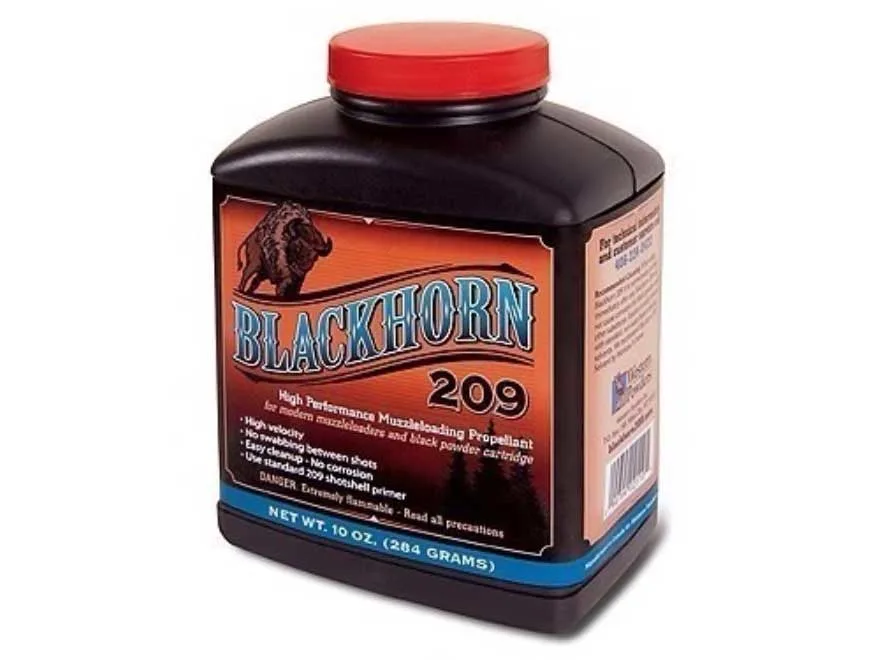
“It seems to provide a little more velocity, but what I like most about Blackhorn is that it’s clean,” Fedinec told me. “You can practice with it, and not have to scrub your barrel every shot, just to be able to reload.”
As with any muzzleloader setup, tinkering with different powder charges can work wonders for tightening your groups—which is another big advantage of loose powder. You can adjust in 5-grain increments if you wish. Of Reed’s two guns that he loans to clients, one shoots best with 100 grains of Blackhorn 209, and the other hits its stride with 120.
How to Avoid Hangfires
Substitute powders tend to be a little more difficult to ignite than standard black powder, especially Blackhorn 209. That company expressly recommends against using primers marketed as muzzleloader primers, and instead going with true No. 209 shotshell primers. I figured that out with my own gun on the range, when I experienced a couple hangfires with Triple-7 primers. The Blackhorn website also has detailed instructions for cleaning your breech plug with a (hand operated) drill bit, to ensure the flash channel is free and clear of debris.
You might consider swapping the breech plug in your inline gun, too, for something expressly designed to accommodate high-performance powders. Aftermarket breech plugs are available for CVA, Traditions, T/C, and other popular muzzleloaders, and they’re cheap insurance at $20 or so. (If you’re hunting in a state that doesn’t allow 209 primers, you can probably find a breech plug for your gun for either No. 11 percussion or musket caps, too, but you’ll want to avoid Blackhorn 209 with those primers.)
Add a Peep Sight to Your Muzzleloader
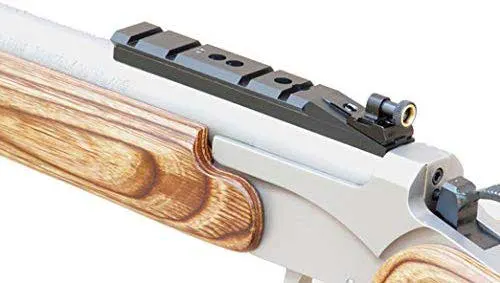
Most muzzleloaders come from the factory with standard open sights. Swapping to a peep sight, Reed says, has also made a huge difference in how well clients shoot them. His loaner guns are both set up with the E. Arthur Brown Peep Rib, which blends a peep sight with a picatinny rail for quick on/off optic removal. That’s a handy thing for a deer hunter who wants to put a scope back on the gun after he gets home from an elk hunt.
“The peep allows for a lot more precision,” Reed said. “You’re not covering up the whole target with the rear sight. Anyone who can shoot a compound bow is familiar with the sight picture, too. Combined with the copper bullets, I think the peep sights have made all the difference for us.”
Get Used to Your Gun at the Range
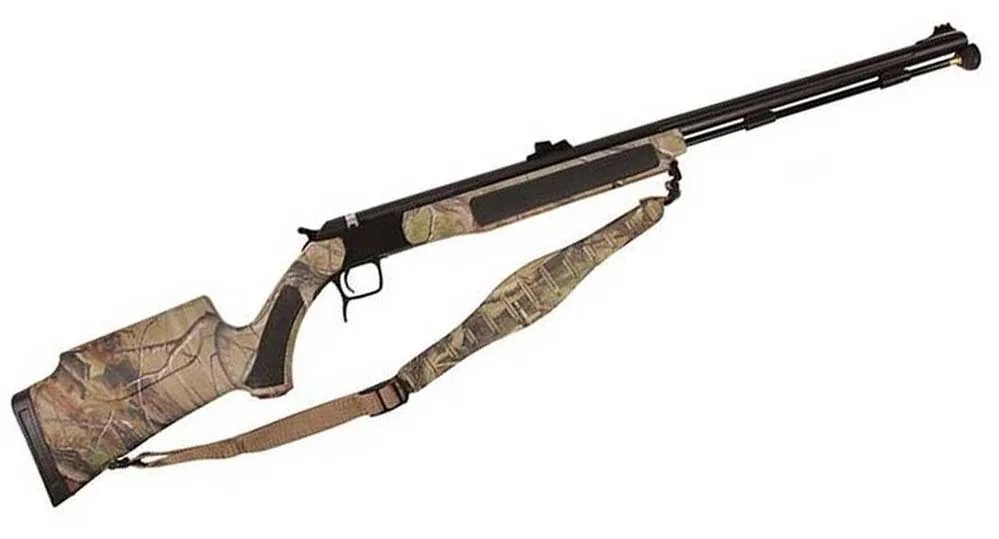
Over the summer, knowing I had my tag, I ordered a CVA Accura V2, along with a bunch of the Federal copper bullets and a couple cans of Blackhorn 209. I initially planned on replacing the factory fiber-optic sights with a peep of my own, but after sighting my gun in, I found that I could keep my shots inside a softball at 100 yards, off my knee, and I felt good about that. In the timber, I didn’t foresee shooting at a bull from much farther anyhow. But to stay sharp over the summer, I burned up a box of ammo every week through an old open-sighted .22, and fired a few shots through my muzzleloader every couple of weeks.
Related: The Biggest Archery Elk of All Time
My gun liked 100 grains of Blackhorn 209, and I did find it important to use true shotgun primers in lieu of muzzleloader primers to prevent hangfires. The setup was clocking just under 2000 fps, which means it produced about a ton of energy at the muzzle. That’s plenty, but it’s also no .300 Win Mag. Remember that, get closer, and choose your shots carefully.






